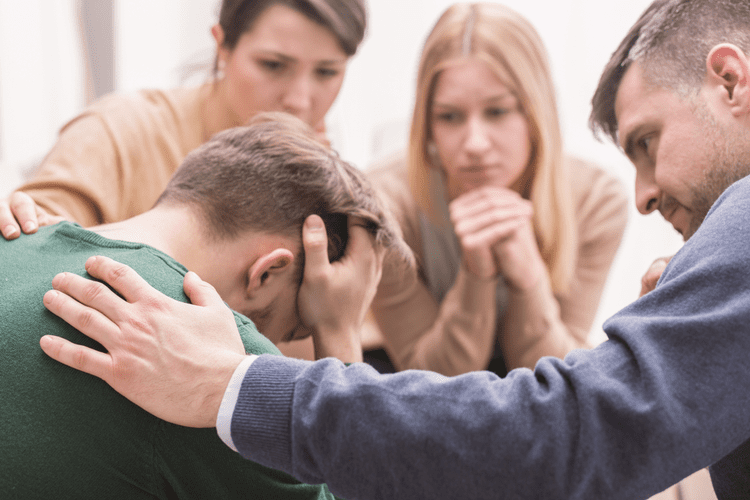Content
- Footer Social
- Xylazine appears to worsen the life-threatening effects of opioids in rats
- Questions about the Oregon Health Plan?
- What are residential and hospital-based treatments for opioid use disorder (OUD)?
- Discuss Your Options With a Counselor
- We also offer treatment and support for health conditions that can be related to substance use problems, like:
- Unregulated rehab industry
During these visits,
the clinician can monitor the potential for relapse and take any necessary steps to
prevent slips from occurring (Brown, 1992). The emergency and referral resources listed above are available to individuals located in the United States and are not operated by the National Institute on Drug Abuse (NIDA). NIDA is a biomedical research organization and does not provide personalized medical advice, treatment, counseling, or legal consultation. Information provided by NIDA is not a substitute for professional medical care or legal consultation.

People often ask what the average length of stay in a drug rehab center is. Addiction treatment typically lasts 30 days, but some programs last 60 or 90 days. If you have a mild addiction, you may only need to stay in treatment for a few weeks. However, you may need to stay in treatment for several months if you have a severe addiction. Involuntary commitment to addiction treatment is a complicated process. Parents of minors can commit their child to rehab for substance abuse, but the process becomes much more challenging once they are over the age of 18.
Footer Social
The exact way that prescription medications work to influence the withdrawal and detox process can vary significantly. But in all, these medications are used to either target and treat precise detox symptoms, or to prevent cravings for drugs. Some medicines may also be used to counteract the high from a medication. For more than 100 years, The Salvation Army has operated rehabilitation facilities across the country that provide help and hope to individuals with a variety of problems, including issues relating to substance abuse. Our charitable residential programs offer spiritual, emotional, and social assistance in an environment designed to help participants live healthy, fulfilling lives.
Like other long-term (chronic) illnesses, people with an addiction can have periods of relapse and recovery. The behavior and social symptoms of addiction can hurt family, friends, or coworkers. But you may be in the best position to help the addict understand the need to seek treatment. Most people who are in recovery say they got help because a friend or relative sober house was honest with them about their drinking or drug use. The Salvation Army Adult Rehabilitation Centers have served as beacons of hope to people seeking help for any number of social and life issues, including problems related to substance abuse. Our programs focus on the physical, emotional, and spiritual well-being of the people who choose to participate.
Xylazine appears to worsen the life-threatening effects of opioids in rats
If they aren’t ready for rehab, you should hire an interventionist. A professional interventionist knows how to get the most stubborn drug addicts into rehab. Since they’re usually emotionally detached from the person, they make the task much easier. Substance abuse can cause problems at home and even lead to job loss or failure at school.
This differs from psychotherapy by trained mental health
professionals (American Psychiatric
Association, 1995). Specific treatment plans must be personalized and will vary depending on the substance being abused, any underlying physical or mental health issues and the individual’s history. Several elements can be combined to create a plan that offers the best chance of recovery, but most fall under inpatient or outpatient treatment programs. Often,
treatment programs will want to coordinate a patient’s treatment with the primary
care provider — such collaboration is essential for certain patients, such as
chemically involved pregnant women. Substance use disorder is a complex mental health and brain condition.
Questions about the Oregon Health Plan?
Opioids are highly addictive, and opioid abuse has become a national crisis in the United States. Statistics highlight the severity of the epidemic, with the National Institute on Drug Abuse reporting that more than 2 million Americans abuse opioids and that more than 90 Americans die by opioid overdose every day, on average. The Centers for Disease Control and Prevention (CDC) found that between April 2020 and April 2021, there were more than 100,000 drug overdose deaths in the United States, an increase of more than 28% from the previous year. With overdose deaths increasing, it is easy to understand why some may feel that forcing their loved ones into rehab is the answer.
- Most people who are in recovery say they got help because a friend or relative was honest with them about their drinking or drug use.
- Conveniently located in Houston, Texas, our rehab program is led by experienced master’s level counselors and medical professionals who specialize in personalized treatment for drug and alcohol abuse.
- Behavioral contracting or contingency management uses a set of
predetermined rewards and punishments established by the therapist and patient
(and significant others) to reinforce desired behaviors. - Preventing overdose death and finding treatment options are the first steps to recovery.
An alcoholic who drinks a 12-pack a day consistently for a year spends over $3,000. This cost doesn’t include potential legal issues that can cost thousands more. It’s harder to estimate the price of illicit drug addiction, but it can be much higher. Get professional help from an online addiction and mental health counselor from BetterHelp.
What are residential and hospital-based treatments for opioid use disorder (OUD)?
One in four Oregon veterans have been frustrated about seeking care for mental health or substance use issues, according to a survey completed by more than 4,000 veterans. Information for providers and consumers about the use of medications to treat opioid use disorders. For risky people with an active addiction, treatment can be as simple as a screening and a brief intervention. For people exhibiting signs of dependence or addiction, a screening will probably lead to a referral for more intense level of care. Perhaps a friend, another family member, doctor, clergy, boss, co-worker, or other significant person in their life might be able to have an effective discussion. Or maybe the person with the substance use disorder would respond to activities you can do together, such as reviewing brochures or videos, meeting with a professional, or going to a self-help SMART Recovery or Twelve Step meeting.

This is because many ethical issues surround the idea of involuntary commitment. Even after alcohol or drug use is stopped, a person experiences withdrawal symptoms from a physical need for the substance. There are many critical components of the ARC program, including spiritual counseling, personalized counseling services, recreational activities, and work therapy. Through group and individual counseling sessions, spiritual direction, holistic work therapy, and life-skills development, program participants learn to overcome problems, including abandoning substance reliance.